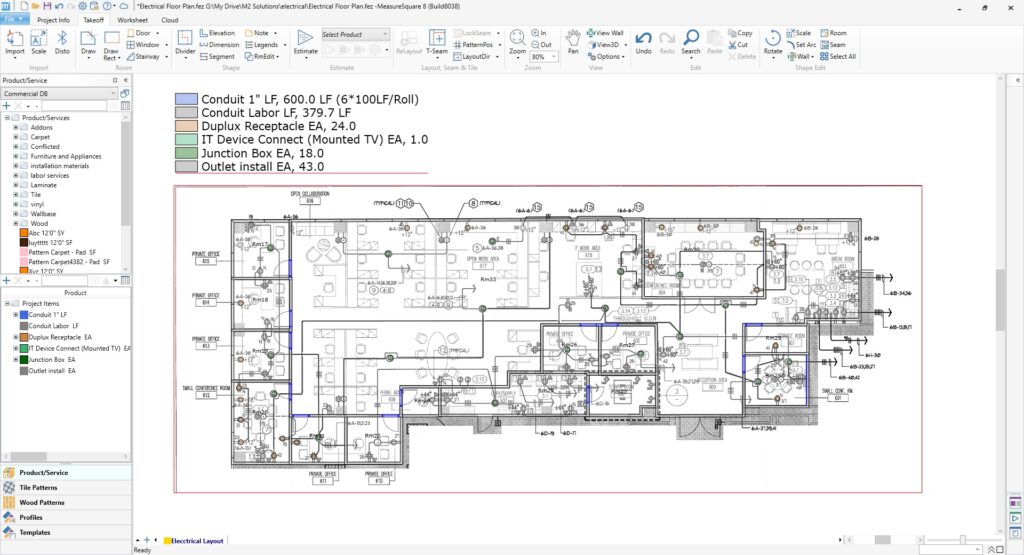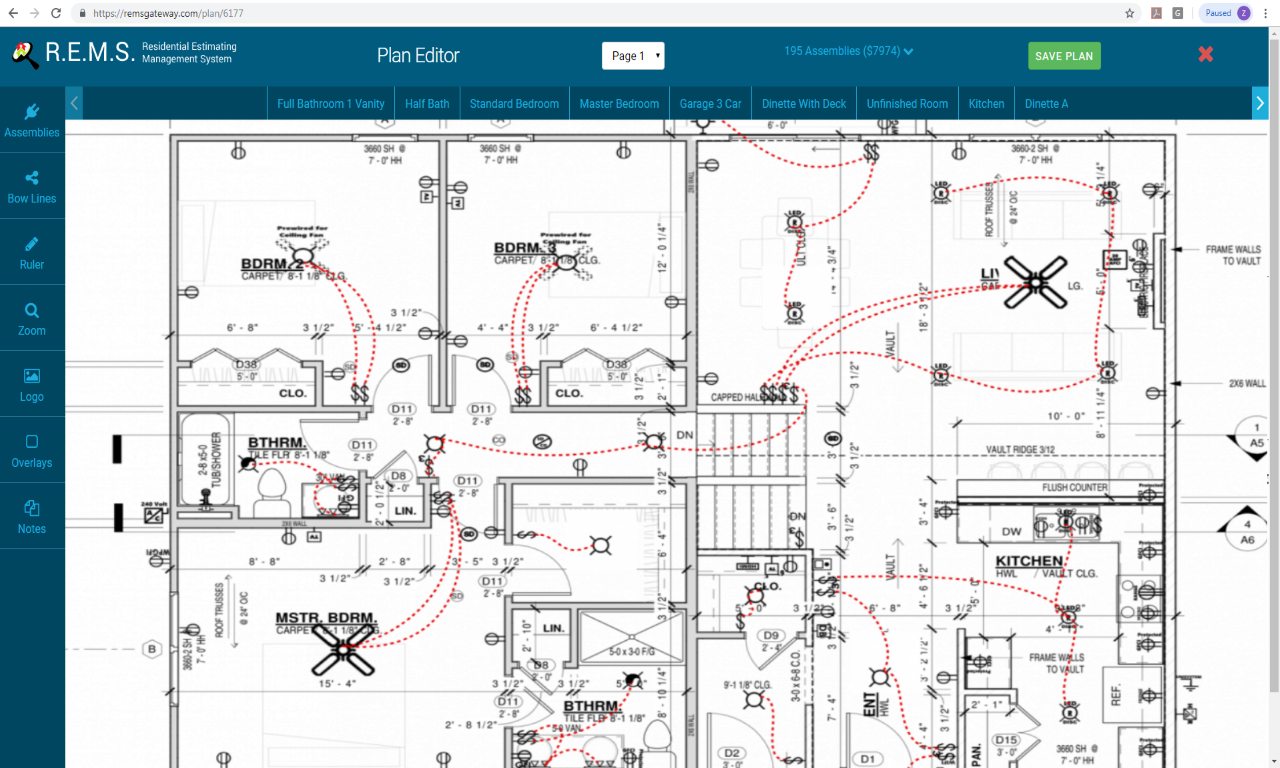A Comprehensive Guide to Electrical Approximating Techniques for Building And Construction Specialists
In the world of building and construction tasks, precise electrical estimating is a keystone for success. The capability to anticipate prices properly can make a considerable difference in the result of a task, both in regards to spending plan adherence and productivity. As building and construction professionals browse the ins and outs of electrical estimating, they experience obstacles that need a mix of market knowledge, analytical skills, and calculated thinking. By discovering the subtleties of approximating methods tailored particularly to electric jobs, experts can improve their ability to bid competitively and protect successful results.
Recognizing Electrical Job Scope

Secret aspects of recognizing the project scope include assessing the building and engineering illustrations, specs, and any type of other pertinent documentation. This evaluation helps in establishing the exact place of electric components, tons needs, voltage specifications, and conformity with building ordinance and laws - CE Estimating Melbourne. Understanding the job extent allows building specialists to anticipate prospective difficulties or discrepancies that might occur throughout the installation process and establish contingency plans to address them successfully.
In essence, a clear understanding of the electrical task scope works as the foundation for precise expense estimation, resource allotment, organizing, and overall project administration, inevitably leading to the effective conclusion of electrical installments within budget and timeline restrictions.

Studying Material Costs
Effective job monitoring in electrical installations necessitates a meticulous evaluation of product expenses to make sure optimum source use and spending plan adherence. Assessing material prices entails a comprehensive assessment of the expenses connected with the electrical elements required for a job. This process requires recognizing the particular materials needed, acquiring quotes from vendors, and calculating the overall price based on quantities required. Concept Electrical Estimating Melbourne. It is vital to consider factors such as worldly high quality, schedule, and prices variations in the marketplace to properly estimate prices.
In addition, carrying out a detailed analysis of product costs makes it possible for job managers to identify prospective cost-saving chances. By contrasting costs from various suppliers and checking out different products or resources, construction professionals can enhance their procurement approaches and decrease expenditures. Additionally, evaluating material expenses assists in developing a practical spending plan and avoiding unforeseen financial setbacks throughout the task implementation phase. Overall, a comprehensive understanding of material expenses is critical for successful job preparation and execution in the electrical building and construction market.
Approximating Labor Costs
To precisely project expenses in electric construction projects, approximating labor expenditures is an important element that requires precise interest and mindful factor to consider (CE Estimating Melbourne). When approximating labor expenditures, it is vital to consider variables such as the number of electricians required, their skill degree, the period of the task, and any potential overtime expenses.
One effective approach for approximating labor costs is to damage down the task into jobs and assign labor hours to every task based upon historical data or sector standards. Using approximating software can enhance this procedure by offering devices and themes to input pertinent data conveniently. Moreover, collaborating with task managers and electricians throughout the estimation procedure can aid verify labor price quotes and make certain a detailed understanding of the job's labor needs. By accurately estimating labor costs, construction professionals can improve cost monitoring and project success.
Making Use Of Estimating Software Program Devices
Employing specialized approximating software application devices can substantially streamline the process of determining labor costs in electric building projects. These tools provide numerous features that improve precision and performance in estimating. One essential advantage of utilizing approximating software is the capacity to develop detailed and personalized directory price quotes swiftly. By inputting project-specific details such as labor rates, material costs, and job timelines, these devices can create specific quotes in a fraction of the moment it would take to do by hand.
Additionally, estimating software can help track adjustments and updates in real-time, making certain that quotes reflect one of the most existing info. This can be particularly useful in vibrant building and construction atmospheres where project details may alter frequently. Additionally, numerous estimating software devices provide assimilation with other task administration software application, permitting seamless sychronisation between estimating, budgeting, and organizing procedures.
Implementing Risk and Contingency Factors
Integrating danger and contingency aspects is crucial in electric estimating for construction projects to represent unanticipated conditions and guarantee economic readiness. Dangers in electric estimating can arise from numerous sources such as material cost changes, labor shortages, style modifications, or unanticipated site conditions. To effectively take care of these dangers, building and construction professionals their explanation must perform a complete threat analysis at the beginning of the estimating procedure. This evaluation involves recognizing potential threats, examining their potential influence on the project, and creating mitigation techniques to address them.
Contingency factors, on the other hand, are added funds alloted to cover unanticipated prices that may emerge throughout the task's execution. These costs can consist of modifications in job extent, delays, or unforeseen expenditures. It is suggested to allot a sensible portion of the task expense as a contingency to make certain financial stability throughout the job. By incorporating threat and contingency variables right into the estimating procedure, construction professionals can enhance the precision of their price quotes, minimize economic shocks, and boost total task management.
Final Thought
To conclude, understanding electric estimating strategies is essential for building and construction specialists to precisely budget and strategy for projects. By comprehending job range, analyzing material prices, estimating labor expenses, using software tools, and applying danger and backup elements, professionals can make sure the success of their tasks. It is critical to continuously improve estimating skills and remain upgraded on market fads to remain affordable in the construction industry.
To properly project prices in electrical construction tasks, approximating labor expenditures is an essential element that needs careful interest and cautious factor to consider. Teaming up with task supervisors and electrical experts throughout the evaluation process can help confirm labor quotes and make sure a comprehensive understanding of the job's labor demands.Employing specialized estimating software application devices can see this page dramatically enhance the process of computing labor costs in electrical construction projects. It is suggested to allocate a practical percent of the job expense as a backup to guarantee economic security throughout the project. By recognizing task extent, examining product expenses, approximating labor costs, utilizing software tools, and applying threat and contingency aspects, specialists can guarantee the success of their tasks.